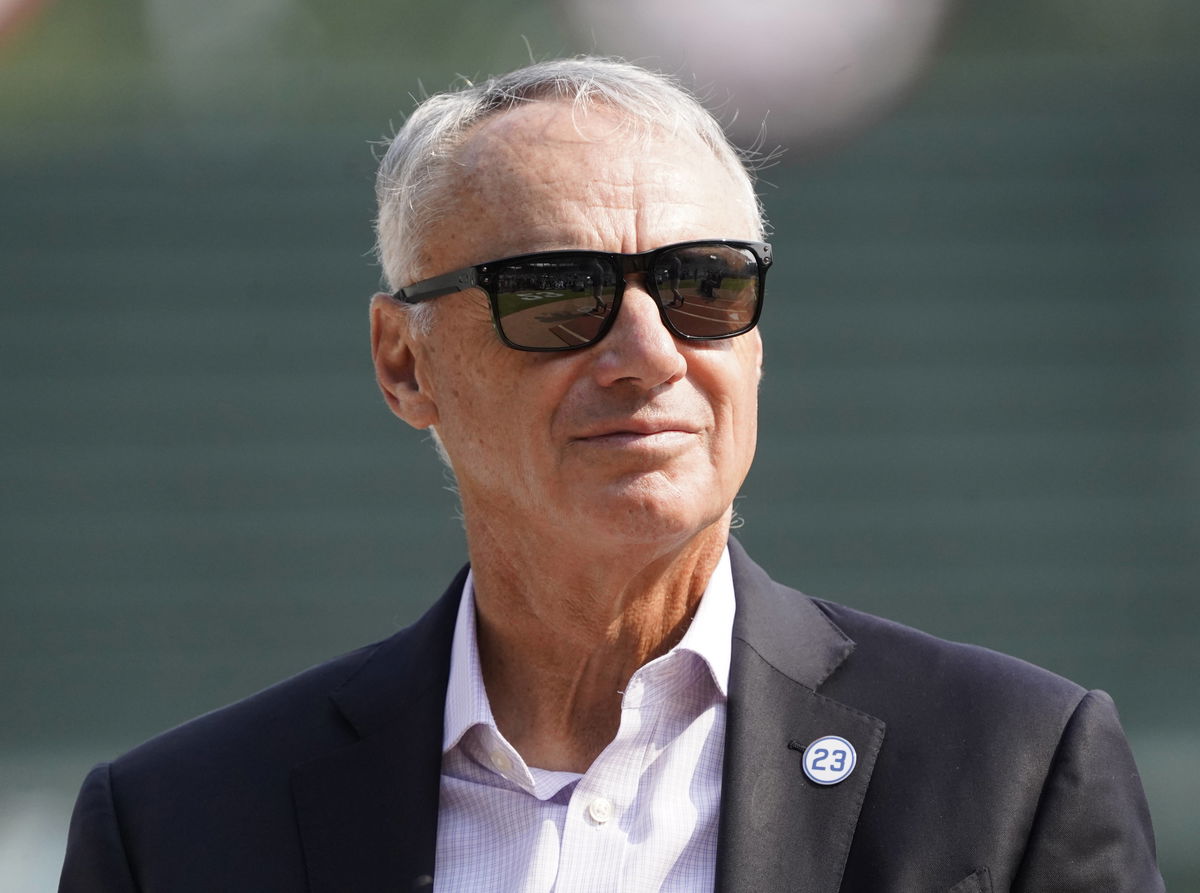
Imago
MLB, Baseball Herren, USA Chicago Cubs press conference, PK, Pressekonferenz Aug 1, 2025 Chicago, IL, USA Baseball Commissioner Rob Manfred announces Major League Baseball and the Chicago Cubs will host the 2027 All Star game at Wrigley Field. Chicago Wrigley Field IL USA, EDITORIAL USE ONLY PUBLICATIONxINxGERxSUIxAUTxONLY Copyright: xDavidxBanksx 20250802_cec_bb6_001

Imago
MLB, Baseball Herren, USA Chicago Cubs press conference, PK, Pressekonferenz Aug 1, 2025 Chicago, IL, USA Baseball Commissioner Rob Manfred announces Major League Baseball and the Chicago Cubs will host the 2027 All Star game at Wrigley Field. Chicago Wrigley Field IL USA, EDITORIAL USE ONLY PUBLICATIONxINxGERxSUIxAUTxONLY Copyright: xDavidxBanksx 20250802_cec_bb6_001
Apart from the usual trading activities, this offseason also introduced much much-awaited new media rights deal for MLB. And as expected, it came with surprises. While ESPN is back on board, MLB is also going back to the NBC era and debuting on Netflix. So, for fans, it would be a mix of nostalgia and new-generation streaming services to enjoy the action. However, there’s more to it…
Watch What’s Trending Now!
As former MLB executive David Samson said, this new media rights deal is nothing but a stepping stone towards a bigger change on the horizon. If you remember, a few months back, Manfred hinted at his vision for NBA-style media rights in MLB. That might be coming sooner than expected.
“It is a straight victory lap for MLB because MLB accomplished the number one thing they wanted to accomplish. All of them will end at the same time, which means that Rob has a chance over the next three years to formulate a gargantuan all-in deal like what you see in the NFL and now in the NBA,” Samson said.
ADVERTISEMENT
Well, for anyone who isn’t familiar with how things work, the NBA uses a very centralized media model…
They negotiate all national TV deals and then split that money evenly among their 30 teams. MLB, meanwhile, has traditionally done the opposite, letting individual teams hammer out their own local TV contracts. Result?
The Dodgers’ revenue last season was $752 million, and the Pirates’ was $326 million. Talk about the gaps!
ADVERTISEMENT

Imago
Image: IMAGO
In comparison, in the NBA, all 30 teams receive equal distribution of media revenue due to their national-level contracts. Now, for reference, approximately all regional media rights should come to an end by 2028. And hence, MLB is now working to line up all of its national TV contracts so they expire at the same time in 2028.
ADVERTISEMENT
The goal? To eventually centralize all media rights and shift toward a model closer to the NBA or NFL… Bigger overall revenue and more even team valuations.
Now, in accordance with the 2028 target, MLB’s new media deal with NBC, Netflix, and ESPN is for 3 years and would end in 2028.
So, tentatively, MLB’s teams would ideally not have any media deals by then. The best time for Manfred to implement the centralized media rights deal with equal revenue sharing for all 30 teams.
ADVERTISEMENT
MLB diversified its media revenue this time
Remember when ESPN backed out of the final three years of its MLB deal earlier this season? They were supposed to pay around $1.65 billion before everything got reworked.
Well, now, ESPN is back with a new three-year agreement, but the landscape looks very different for MLB.
ADVERTISEMENT
Instead of relying so heavily on one network, the league has diversified its media revenue streams.
Under the new setup, MLB will get about $250 million for the same package of games ESPN used to pay much more for, a drop of roughly $300 million. So is that a loss? Not really.
According to The Athletic, the loss incurred from ESPN could be adjusted by Netflix and NBC. Reportedly, NBC will pay $200 million per year till 2028, and Netflix will pay another $50 million per season.
However, let’s not forget that it still has miles to go before MLB catches up with the NBA. Why?
Because of their latest deal with ESPN, the NBA reportedly tripled its media rights revenue from its last deal. To replicate this here, MLB should adopt a centralized approach to media rights, and hopefully, this new contract is just the start.
ADVERTISEMENT
ADVERTISEMENT
ADVERTISEMENT

